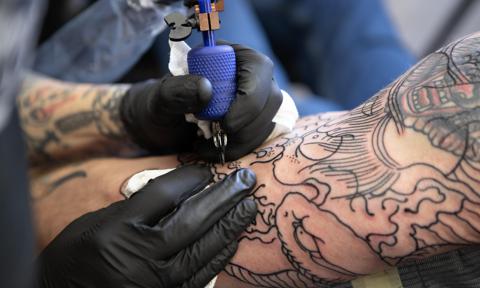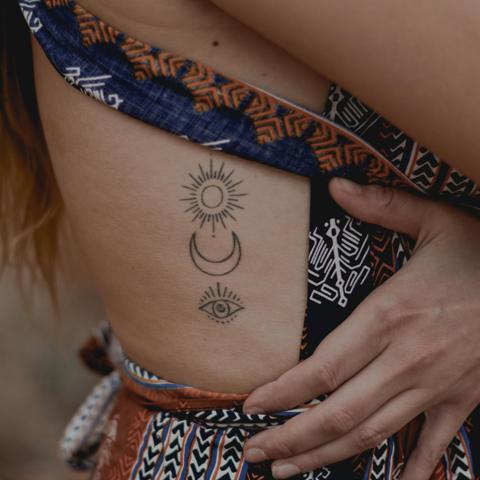
If the only thing stopping you from getting a photo of Hrithik Roshan and Jaadoo (from Koi…Mil Gaya) hugging each other is the fear of tattoos being painful (and not the fact that getting that tattooed would be borderline psychotic), then you can rest assured.
A group of scientists at the Georgia Institute of Technology have developed painless, low-cost, and bloodless tattoos that can be self-administered.
The researchers have developed tattoo patches containing special microneedles that were conceptualised for a painless vaccine delivery method. The possibility of using the microneedles in the tattoo patch to deposit ink on the skin was soon discovered, leading to these tattoos being used primarily in veterinary care, in place of ear tags or other branding methods. But, according to the researchers, the applications could extend to medical and cosmetic care in the future.
“We’ve miniaturised the needle so that it’s painless, but still effectively deposits tattoo ink in the skin,” writes Professor Mark Prausnitz, principal researcher, in a paper on the project, “This could be a way not only to make medical tattoos more accessible but also to create new opportunities for cosmetic tattoos because of the ease of administration.”
In a medical setting, tattoos are often used to cover up surgical scars or to guide repeated cancer radiation treatments. They can also be used instead of bracelets as medical alerts to communicate pre-existing health issues like diabetes, allergies, or epilepsy.
Typically, tattoos use large needles to repeatedly puncture the skin to deposit the ink, causing pain and bleeding. The tattoo patches developed by these scientists come equipped with microneedles that are smaller than a grain of sand and made of tattoo ink encased in a dissolvable matrix. This means that the needles just need to be pressed into the skin once for the ink to get deposited before it dissolves, causing no pain or bleeding.
If, in the future, you’re using these microneedle tattoo patches to get the tattoo of your dreams, then think of each needle as a pixel that would create an image in any shape or pattern.
“The goal isn’t to replace all tattoos, which are often works of beauty created by tattoo artists,” Professor Prausnitz clarifies, “Our goal is to create new opportunities for patients, pets, and people who want a painless tattoo that can be easily administered.”
Would you DIY a microneedle tattoo in the future?!






